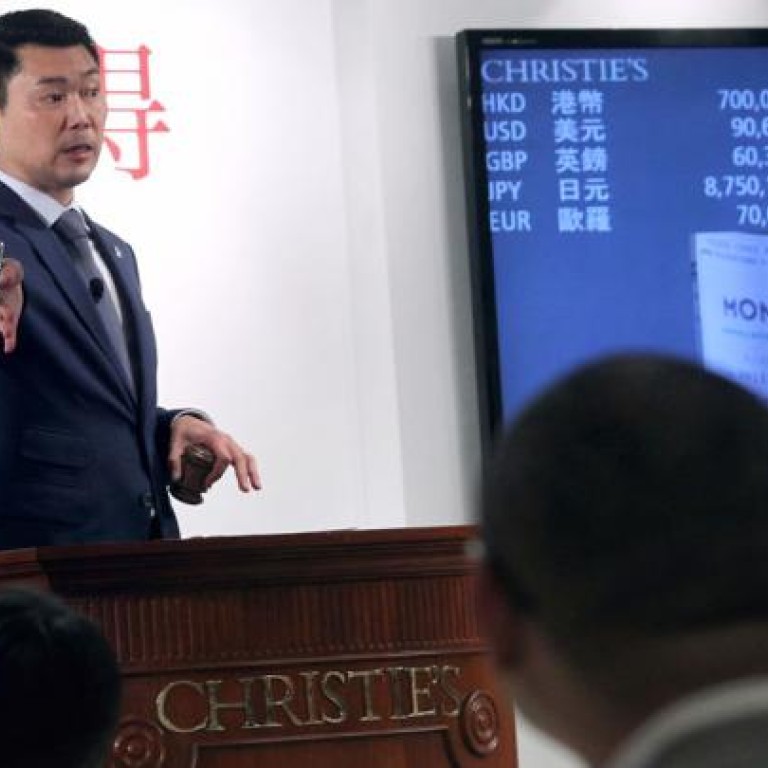
Wine investors warned to be vigilant after doubts over Henry Tang sales
They can be quite difficult to spot, but the clues are always there for vigilant investors who are willing to do some research, say experts
The message from the experts on fake wine is do your homework - on the people selling you the wine as much as the wine itself.
Even then, expect to buy some fakes.
Clues can be quite subtle. Don Cornwell, who alerted Christie's last weekend to the presence of possible fake lots at their auction of Henry Tang Ying-yen's Bordeaux collection, noticed anomalies with the wax seals on some lots.
"The wax on an authentic bottle of 1959 Romanée Conti is red - in the case of Mr Tang's bottles it was violet coloured, which matches the wax Domaine de la Romanee Conti started using in the vintages in the late 1990s," Cornwell told the . He also noted there was no evidence of wear or oxidation on wax that should have been 54 years old.
Winemaker, educator and journalist Tersina Shieh said: "I know Christie's and they will check. If Christie's cannot spot fakes it would be quite difficult for investors."
Not all fakes are so hard to spot. Shieh recently spotted some Bordeaux wines labelled merlot - the giveaway was that the region's producers do not carry the grape variety used on the label. Badly misspelled labels are fairly common as well.
It's also an idea to study the differing bottle shapes from different wine regions.
Laura Budlong, owner of retailer Force 8 Cellars and wholesaler International Connoisseurs, said counterfeits were far more common over the border. "There are far too many occasions when you have to drink it and you cringe," she said.
Labels "should be on very dull, very nice quality paper", said Matthew Bradford, beverage director at Epicurean Group. He had come across bottles of Chateau Petrus 1982 with labels that were clearly laser printed.
Some producers are taking measures to protect their names and consumers. QR labels that can be scanned with a smartphone can help trace the origin of a wine. Chateau Margaux has adopted a bubble seal capsule.
Each capsule, the foil around the top of the bottle, is unique and comes with a code that the buyer can enter on the company's website.
"Consumers have a serious duty to research first before going to auctions," said Shieh.
Budlong also advises serious research, as much on the auctioneer or vendor as the wine itself. "Is there traceability from the collector - where they bought it and stored it?
"If there is I would have confidence. Honestly, other than that, I wouldn't touch it," she said.

